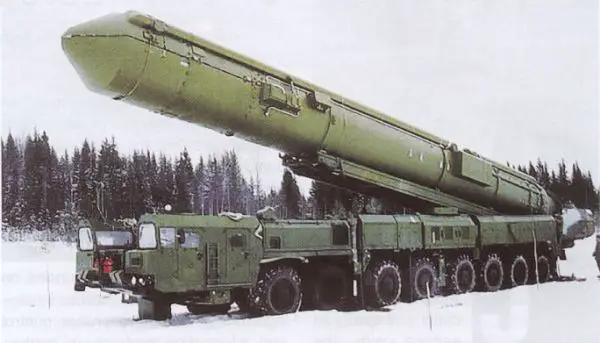
A new intercontinental Russian missile whose development has been kept as a state secret failed in its first test-firing and crashed back into the launch zone, reports said Sept. 28.
Reports published on Russian news agencies about the failed test firing from the Plesetsk cosmodrome in northern Russia appeared to be the
first indication that the ground-based missile even existed."After launch, the missile fell back down onto the territory of the cosmodrome. There were no casualties or damage," a military source told the state RIA Novosti news agency.
The Interfax news agency quoted its source as saying that the cause of the failed launch, which took place on Sept. 27 but was not announced at the time, was a problem with the second stage of the missile.
A defense ministry spokesman confirmed to Interfax that there had been tests the day earlier at Plesetsk of "new types of rocket technologies" but did not give any further details. Contacted by AFP, the ministry did not offer any comment.
Russia news agencies said that the new missile was a development of Topol-M and Yars strategic missiles, which have a range of more than 6,200 miles. But the new missile has special features to defeat air defense systems.
The secret development of a missile that is able to beat air defenses comes at a time when Russia is still locked in a tense dispute with the United States over its plans to install such systems in ex-Communist Eastern Europe.
The failure of the missile is also the latest setback for Russia's rocket forces after a series of mishaps with its submarine-launched intercontinental Bulava missile.
Russia has now carried out 16 tests of the Bulava, seven of which ended in failure.
The most embarrassing Bulava setback was in late 2009 when the missile's failure caused spectacular images in the sky above the Norwegian city of Tromso that locals initially speculated was a meteor, the northern lights or even a UFO.

No comments:
Post a Comment